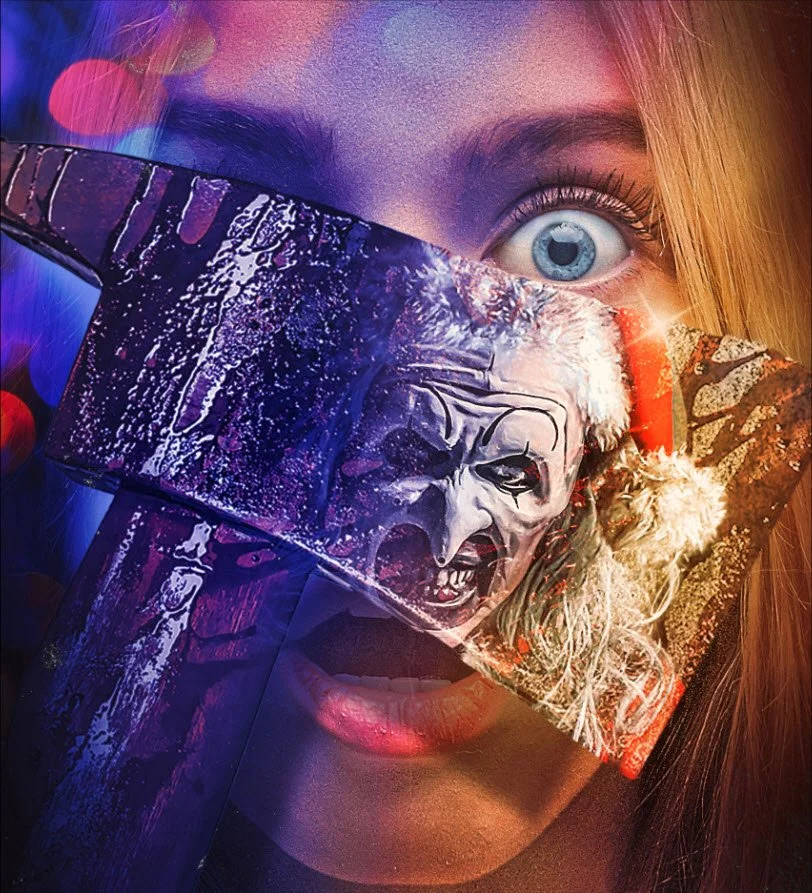Spiral (2000) - Review
Not to be immediately confused with the more recent movie, Spiral, starring Chris Rock, about the Jigsaw killer from the Saw franchise, Spiral (aka Uzumaki) is a Japanese cerebral horror film based on the comic series of the same name by author Junji Ito. Despite having not seen the other Spiral, I’m going to say it’s safe to assume that the name is the only thing these two films have in common. Uzumaki—as I’ll refer to it for the rest of this review for the sake of avoiding confusion—is a far more bizarre and mythical tale than that of something out of the Saw franchise.
Image: Omega Micott
Pros
Brilliantly shot and edited with interesting camera angles and techniques
Some genuinely creepy or unsettling moments sprinkled throughout the film
Cons
Not much of a story with the structure to it
Acting is not great, especially when forced to talk directly into the camera
Some special effects have not aged well
Plot & Thoughts
Kirie Goshima (Eriko Hatsune) is a simple high school girl who loves her childhood best friend, Shuichi Saito (Fhi Fan). Their romance isn’t necessarily blossoming, though. While Shuichi clearly has his own feelings for Kirie, he’s been distracted by his father’s recent odd behavior. His father, Toshio (Ren Ôsugi), has become obsessed with the shape of a spiral, spending most of his day recording videos of it occurring in the world, such as on the shell of a snail. The strange behavior does not stay just with Toshio, however. Soon enough, some of the other residents of the small village in the mountains of Japan start to behave strangely, and more of the spiral shape can become visible as people find ways of emulating or displaying it.
Image: Omega Micott
That’s more or less the plot. Even as things get weirder in the film and characters start dying due to ‘accidents’ regarding the shape, the reason why this is happening remains very vague. A police investigator comes to the town because he has his own theories that he’s trying to prove, which are most likely the truth of the tale. Yet, nothing ever really comes to fruition from his interactions with Kirie and Shuichi. Even at the very end, when everything is hitting the fan and the horror has been fully activated, I never fully understood why people in the town started to go crazy or why it started at this particular point in time.
All that being said, I still actually like Uzumaki. In some ways, I respect the fact that it didn’t really have a traditional plot. The police investigator is certainly the character that grounds the story a little bit and pulls it in the direction of other traditional horror films. He gives a reason for the town’s backstory to be discussed, and we learn about the strange curse that seems to be on this town from his investigations. What he finds never really accomplishes much, and we’re left to just follow around the characters of the town instead. As a result, Uzumaki ends up being an unconventional anthology film in which you are just following the different characters and trying to guess how the spiral curse will affect them. The performances of the actors as these characters are not the highlight of the film, however. Much of the acting in Uzumaki is pretty bad. It’s either overly dramatic or extremely flat in most instances. Instead, I would argue that the greatest strengths of this film are in its cinematography and editing.
Image: Omega Micott
I can say with a degree of certainty that the way Uzumaki is shot and edited is the primary reason to see it. The camera is sometimes placed in low-angle corners to track characters as they move while giving a wide-angle view of the buildings, mountain peaks, and skyline of the town. Other times, it hovers above the characters and sweeps down in a spiral shape, as you might expect. Likewise, the editing has some interesting tricks to it as well, with unique fade cuts and overlaying of imagery. Adding to the mystery and ominous tension of the film, there is even a spiral effect that sometimes appears in the background. The effect’s appearance is similar to viewing a reflection in a large window that has a bend in the glass somewhere.
Probably my favorite moment from the film that demonstrates the strengths of both the editing and cinematography is the one in which Kirie arrives at Shuichi’s house at night, but no one appears to be home. As a single long shot, the perspective pans out from the front of the house as Kirie goes around the back to investigate. It’s extremely dark, so we can only see her go around the side of the house before she disappears from the shot. As the camera continues to move further away from the home, the pale face of a woman begins to appear on the screen, and the sounds of the night are slowly replaced by unsettling music before it all snaps back to reality from the sound of Kirie screaming in the distance.
Image: Omega Micott
TL;DR (Conclusion)
Despite the fundamental flaws of Uzumaki that would normally turn me away from a film, it still manages to be a movie that I enjoyed. It feels like a unique viewing experience and manages to be unsettling in its own way. I doubt it will terrify you. I doubt you’ll be amazed by the special effects or the acting of the cast. I doubt you’ll come away from the film completely understanding the plot or what happens to the small town. However, you might still enjoy Uzumaki if you come to it with an open mind and an analytical eye for the film techniques that are on display.













